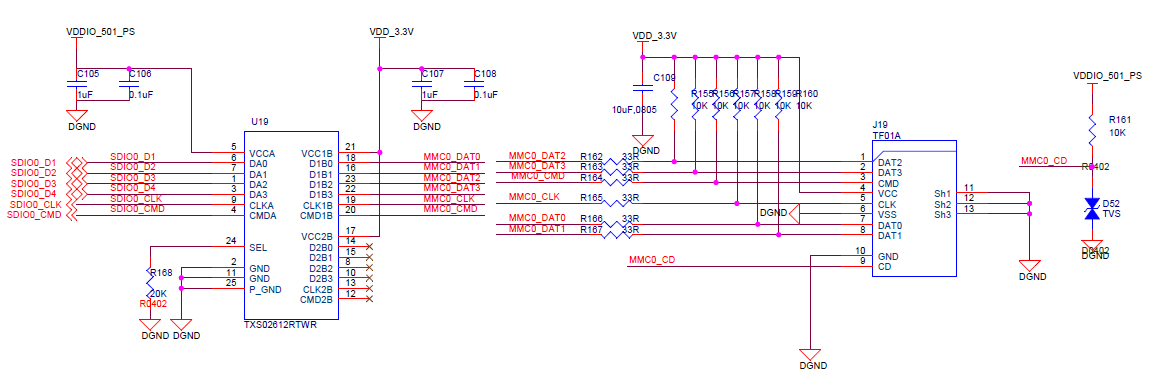Other Parts Discussed in Thread: LSF0108, TXB0104
hi All
I already use a TXS02612 SDIO expander voltage-level translator for connecting of a SD Socket to a xilinx Zynq SoC to Shifting from 1.8V to 3.3V.
it almost works in 50mhz or 100mbps.
so right now I want to substitute it by a Bidirectional Level Shifter with SSOP or TSSOP packages?
I highly appreciated for any offers about a suitable substitution voltage level shifter :-)
TanQ


